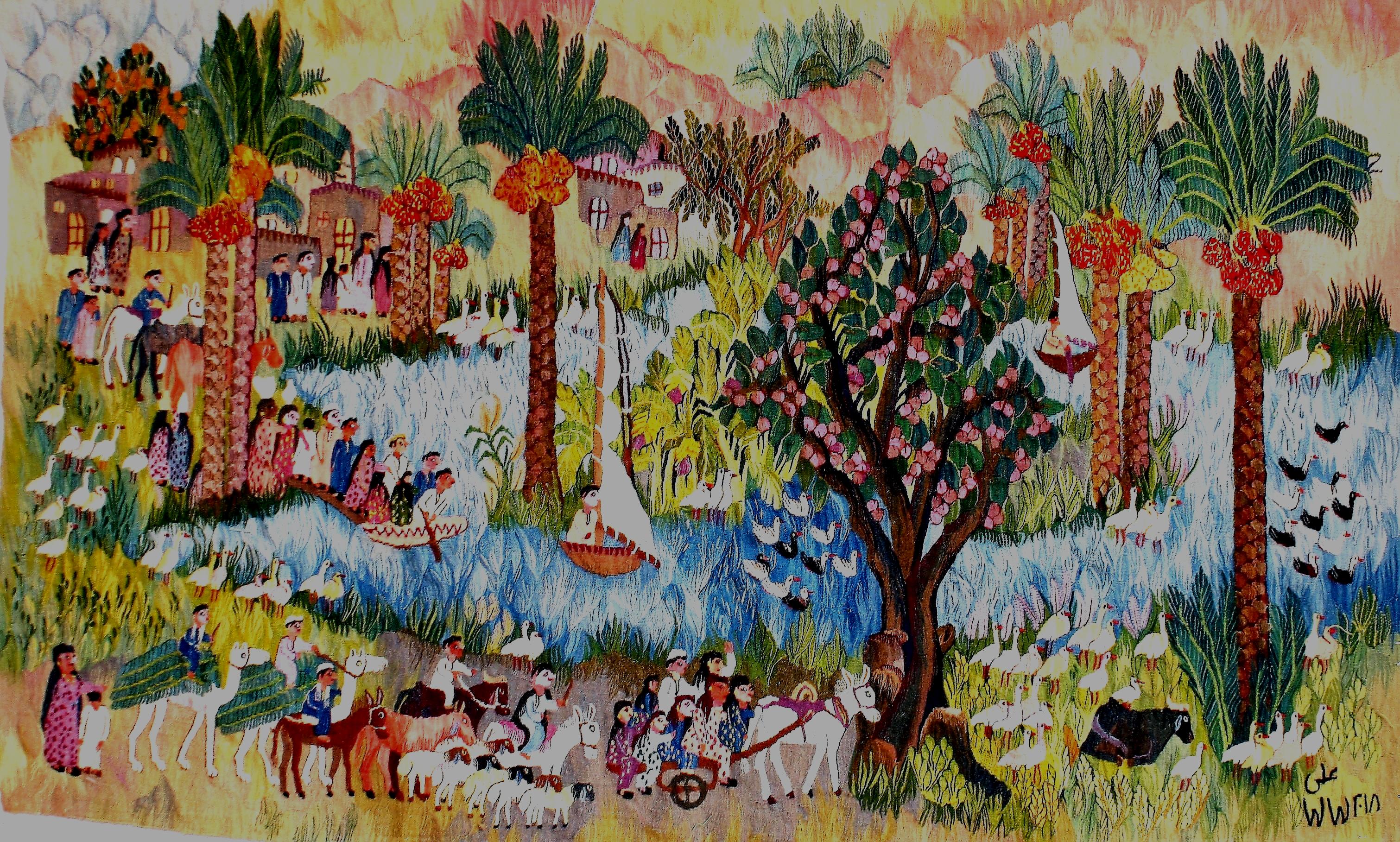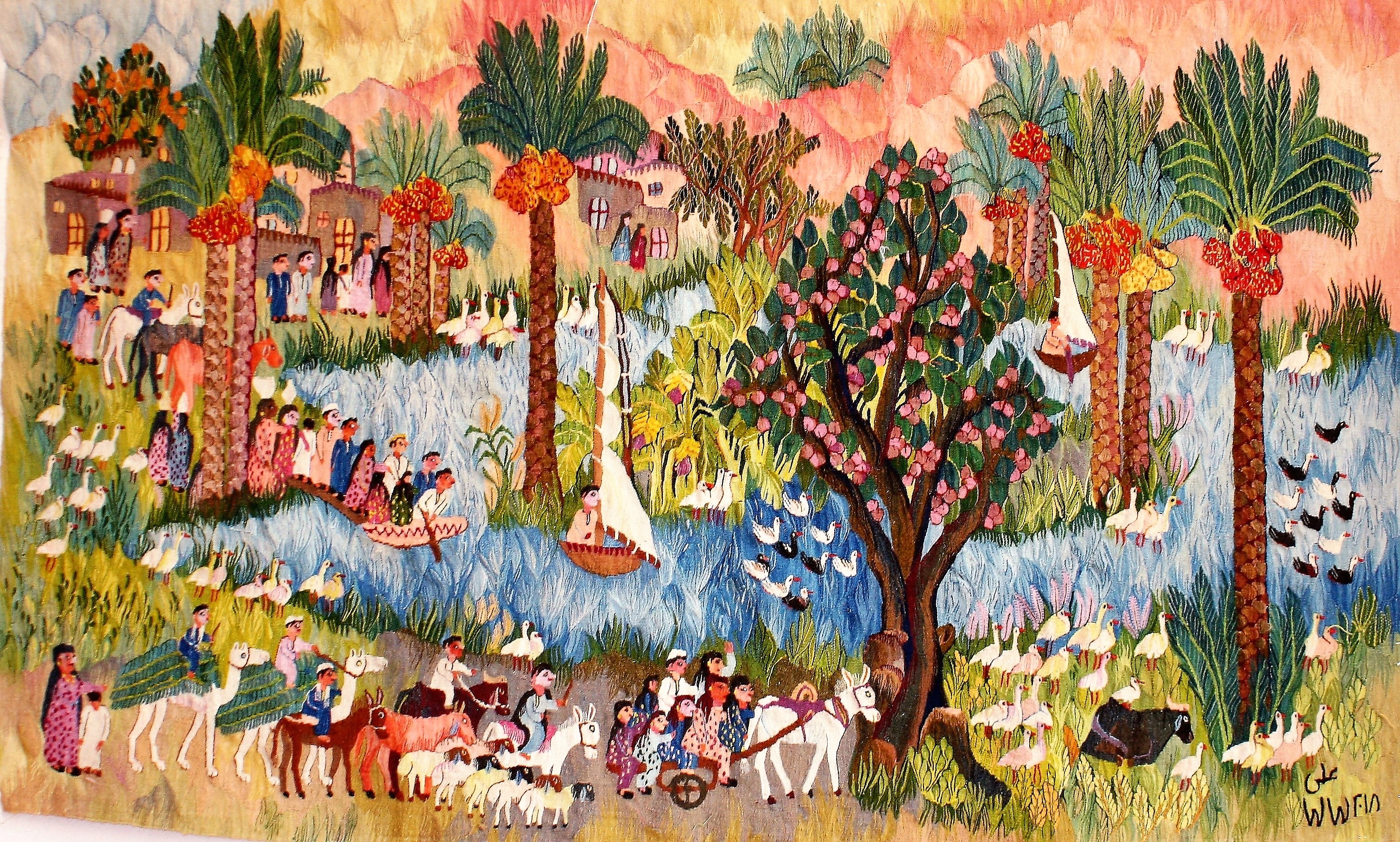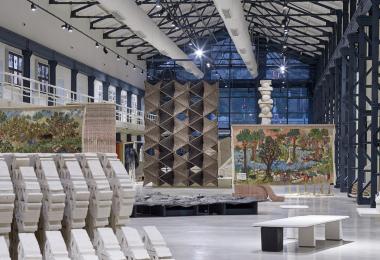The Hangar Exhibition
Beyond the appreciation of territory and landscape as a romantic backdrop, enjoyed as a view for tourism and leisure activities, designers at the Hangar Exhibition 2019 present works that prove that there are more in-depth research and consideration of landscapes than what first meets the eye.
Rasem Kamal, a Jordanian architect based in Basel, Switzerland, showcases ‘The Canyon Walls’, a series of freestanding curvilinear partitions inspired by the Jordanian Siq, or naturally formed canyon.
These walls are arranged to create a narrow passage, a sanctuary where people can disconnect and experience moments of spatial expansion and compression, as a formal interpretation of the Jordanian landscape.
Each Canyon Wall is also designed as an independent piece: sculpted interior room partitions, containing carved niches that offer places to sit, pause, and reflect.
The Canyon Walls - Rasem Kamal
Using a different medium, Anne Holtrop’s piece is an installation made of cast pigmented gypsum. The piece explores the habitability of topography through the thinking of the landscape as a house.
Represented at a 1:10 scale, the reliefs are imagined as the setting for a possible house, one where within the topography a bedroom, a dining room or a bathroom are nestled between the contours of the land. This constructed and imagined landscape seeks to re-question our often romantic relationship to landscape in architecture by suggesting a more direct and physical relationship to site and land.
Anne Holtrop started his architecture practice Studio Anne Holtrop in 2009 and is currently based in Amsterdam and Muharraq in Bahrain.
Topography as House - close-up
Shifting to a completely different, and more colorful medium, Ramses Wissa Wassef’s Art Centre’s (RWWAC) participation shows us how landscape is interpreted in textiles and tapestries.
RWWAC is the home of a unique experiment in creative weaving that has produced tapestries that have been admired and collected by textile lovers and museums worldwide. At present, 30 artists are engaged in the wool weaving, cotton weaving, and batik produced at the center, and also teach their art to children.
For the Hangar Exhibition, RWWAC is contributing two unique and handmade wall tapestries that are original works of art, woven directly on the loom, without the aid of a preliminary design. They are colored with natural vegetable dyes, planted in the gardens of the RWWAC. The two pieces are made by Nagla Farouk and Ali Seliem, and they are entitled ‘Fields and Countryside’ and ‘Village on the Nile’, respectively. Both tapestries were woven sideways and took 5 and 10 months to complete.
Fields and Countryside by Nagla Farouk
Village on the Nile by Ali Seliem
On a more critical note, Zeid Madi presents ‘Urban Patterns’, a visual cartographic exhibition highlighting the effects of human exploitation of natural landscapes in Jordan. The images presented highlights the massive impacts. These massive impacts are primarily caused by unregulated urban sprawl, the broad and expansive mining industry, the systematic occupation of forest and agricultural regions, and the overconsumption of natural water resources.
Covering an area of 89,000 km², the bounding region encapsulating Jordan was fully mapped via GIS satellite imagery, geological cartographic maps, and comparative analysis of declassified/historic CIA aerial imagery of the region from the ‘60s.
Zeid Madi is an architect and urban planner from Amman, Jordan. He is the principal founder of Cluster Labs, a multidisciplinary design and research lab based in his hometown.
Urban Patterns by Zeid Madi




